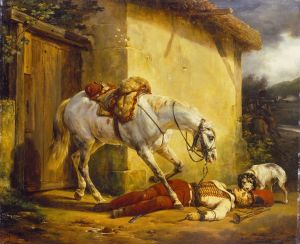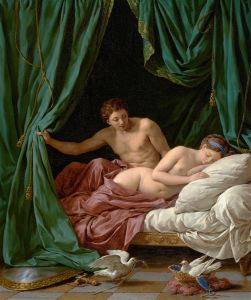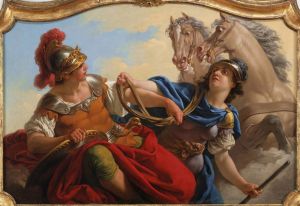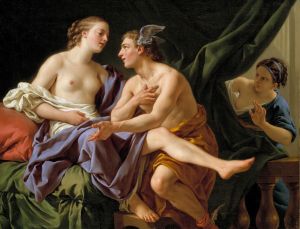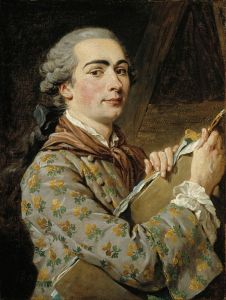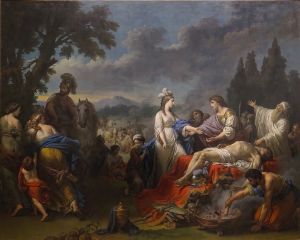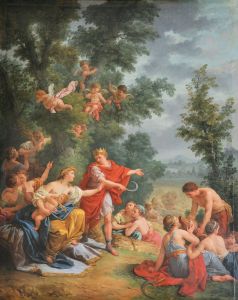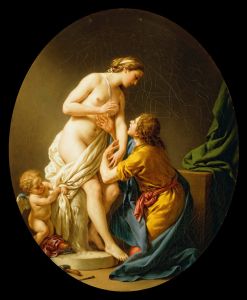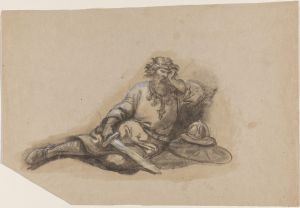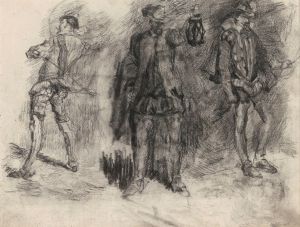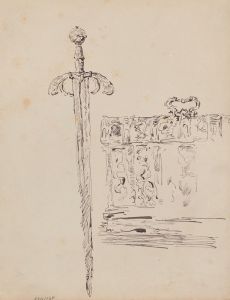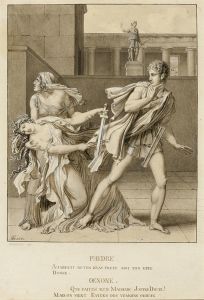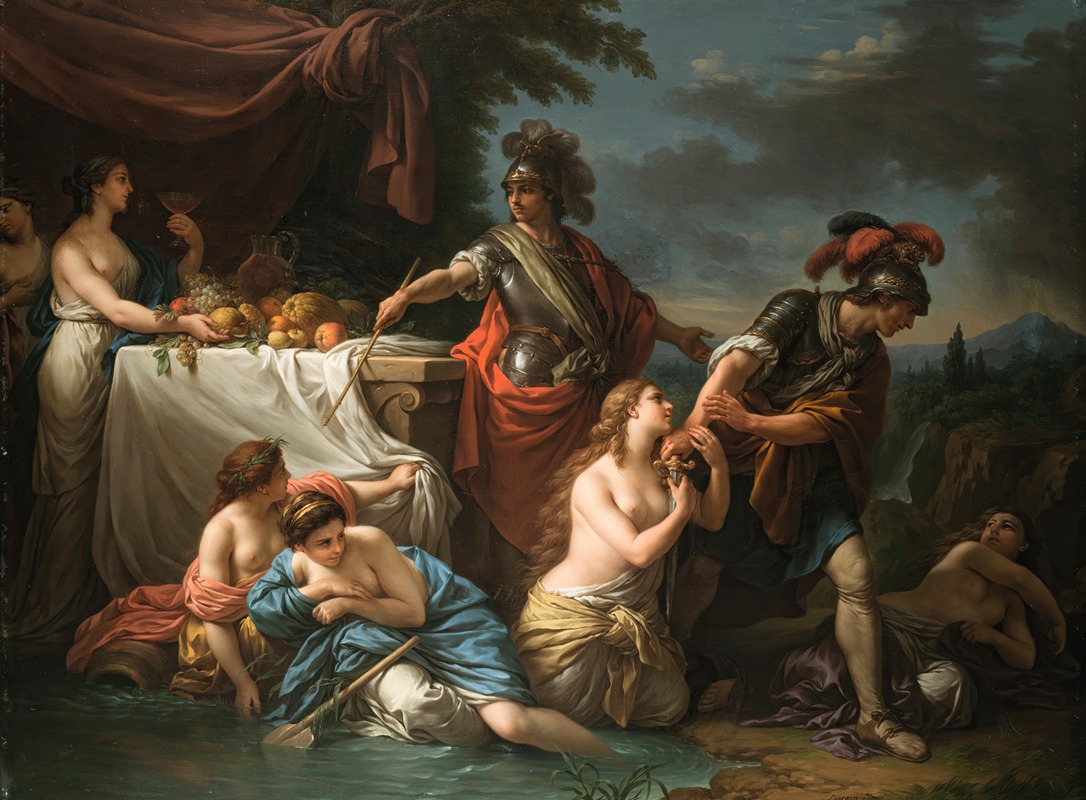
Ubalde et le chevalier Danois
A hand-painted replica of Louis-Jean-François Lagrenée’s masterpiece Ubalde et le chevalier Danois, meticulously crafted by professional artists to capture the true essence of the original. Each piece is created with museum-quality canvas and rare mineral pigments, carefully painted by experienced artists with delicate brushstrokes and rich, layered colors to perfectly recreate the texture of the original artwork. Unlike machine-printed reproductions, this hand-painted version brings the painting to life, infused with the artist’s emotions and skill in every stroke. Whether for personal collection or home decoration, it instantly elevates the artistic atmosphere of any space.
Louis-Jean-François Lagrenée was an 18th-century French painter known for his works in the Rococo and Neoclassical styles. He was born on December 30, 1724, in Paris, France, and became a prominent figure in the French art scene during his lifetime. Lagrenée was a student of Carle Van Loo, a notable French painter, and he followed in his mentor's footsteps by developing a style characterized by elegance, clarity, and a refined sense of composition.
One of Lagrenée's notable works is "Ubalde et le chevalier Danois," which translates to "Ubaldo and the Danish Knight." This painting draws inspiration from the epic poem "Jerusalem Delivered" by the Italian poet Torquato Tasso, published in 1581. The poem is a fictionalized account of the First Crusade, focusing on the Christian knights' efforts to capture Jerusalem. It combines historical events with romantic and fantastical elements, making it a popular source of inspiration for artists and writers of the time.
"Ubalde et le chevalier Danois" depicts a scene from Tasso's poem, where the characters Ubaldo and the Danish Knight (Rinaldo) are involved in a significant episode. In the narrative, Ubaldo is one of the Christian knights who embarks on a mission to rescue Rinaldo, who has been enchanted and held captive by the sorceress Armida. The painting captures the moment of their encounter, highlighting themes of bravery, camaraderie, and the struggle between duty and enchantment.
Lagrenée's interpretation of this scene is marked by his attention to detail and his ability to convey the emotional intensity of the narrative. The composition likely features the two central figures, Ubaldo and Rinaldo, in a dynamic interaction, with elements that suggest the mystical and adventurous nature of their quest. Lagrenée's use of color, light, and shadow would have been employed to enhance the drama and focus the viewer's attention on the central action.
As a member of the French Royal Academy of Painting and Sculpture, Lagrenée was well-regarded in his time, and his works were exhibited in the prestigious Paris Salon. His paintings often reflected the tastes and interests of the French aristocracy, who were fascinated by classical themes and the romanticized portrayal of historical and mythological subjects.
While specific details about the painting "Ubalde et le chevalier Danois" are limited, Lagrenée's body of work is characterized by his skillful blending of Rococo elegance with the emerging Neoclassical style. His paintings often feature graceful figures, harmonious compositions, and a polished finish, all of which would have been present in this work.
Lagrenée's contribution to the art world extends beyond his paintings; he also served as a director of the French Academy in Rome, where he influenced a new generation of artists. His legacy is preserved in various collections, including those of major museums such as the Louvre in Paris.
In summary, "Ubalde et le chevalier Danois" by Louis-Jean-François Lagrenée is a testament to the artist's ability to bring literary and historical themes to life through his art. Although specific details about this particular painting are scarce, it remains an example of Lagrenée's talent for capturing the spirit of epic narratives and his role in the transition between Rococo and Neoclassical art.






